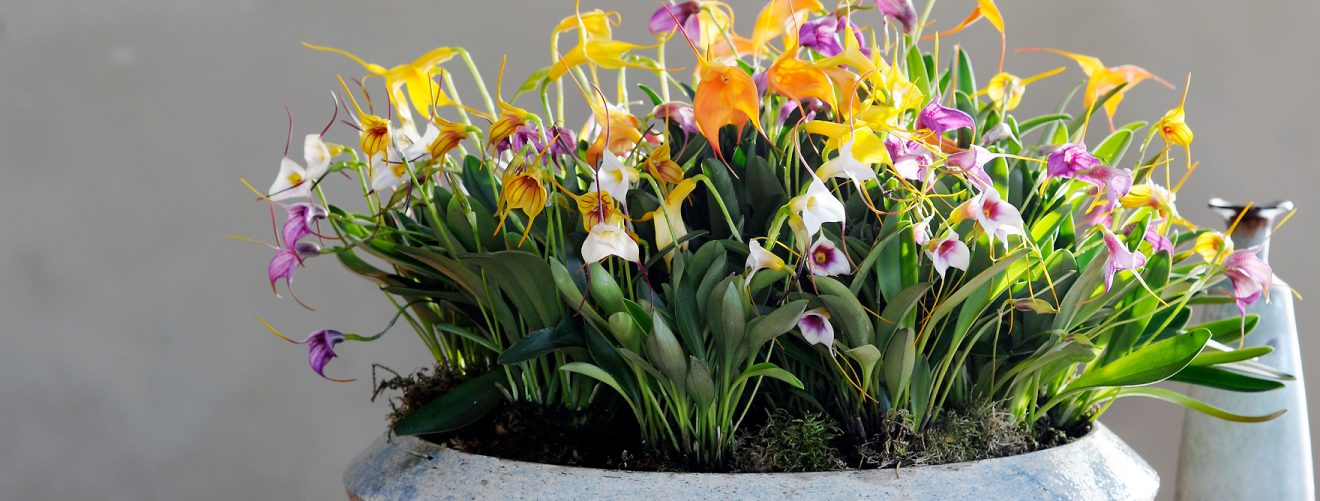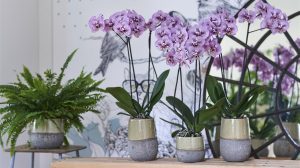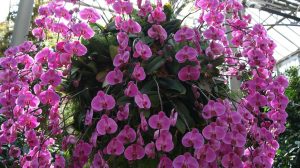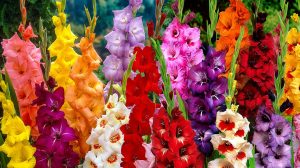The phalaenopsis is the best known member of the Orchid family. But there appear to be over 20.000 other family members. These Specialty Orchids are in the spotlight as Houseplant of the Month November. Today you will meet 3 of them that are nothing similar to the ordinary phalaenopsis.
Specialty Orchids are true exotic beauties that seem to come straight from the rainforest. It’s such a shame that they are not very well known because these charismatic eccentrics are perfect plants to add an exotic and mysterious touch to your (botanic) interior. With their unusual shapes, beautiful colors and spectacular flowers, they will add instant style and colour to your home. I think that is something we all could use now it gets grey, cold and gloomy outside. So it’s great they are House plant of the Month. let’s meet our new favourite Orchids.
Masdevallia: happy monkey flowers
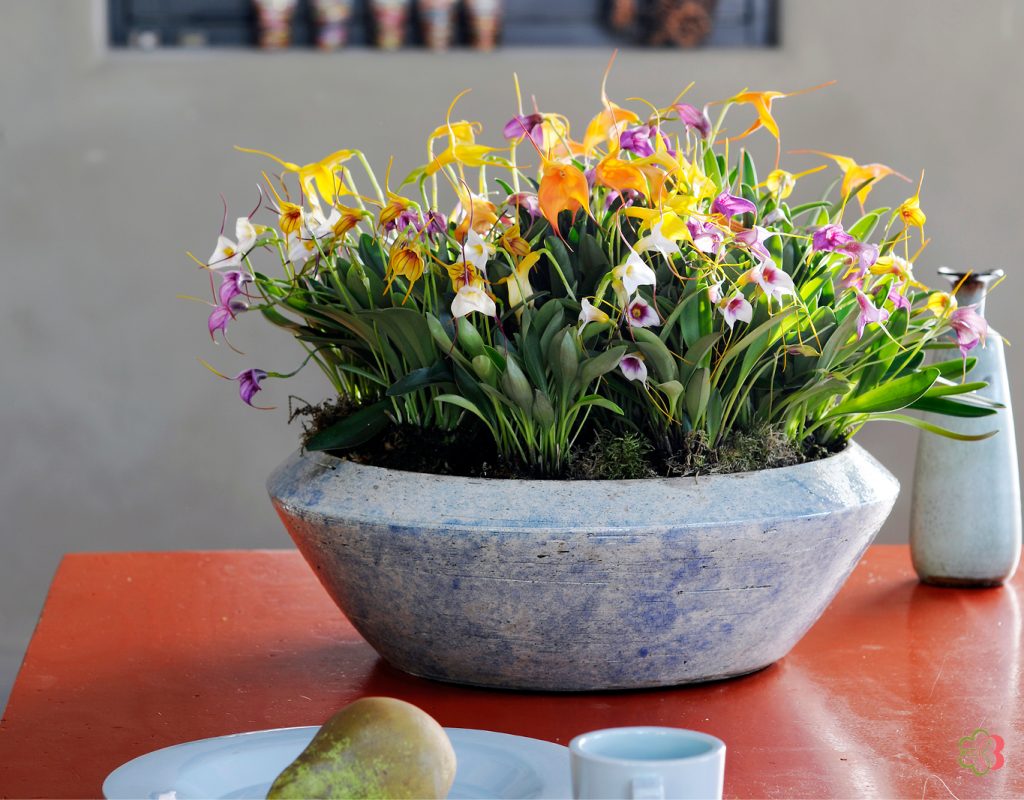
Let’s start with my personal top favourite: the masdevallia. This colourful exotic variety is named after Jose Masdevall, doctor and botanist at the court of King Charles III of Spain. The Masdevallia originates from South-America. It’s flower is like a little jewel with elegant strands that somehow looks like a monkey. This funny shape in combination with the bright colours make me smile!
Cambria: purple rain of flowers
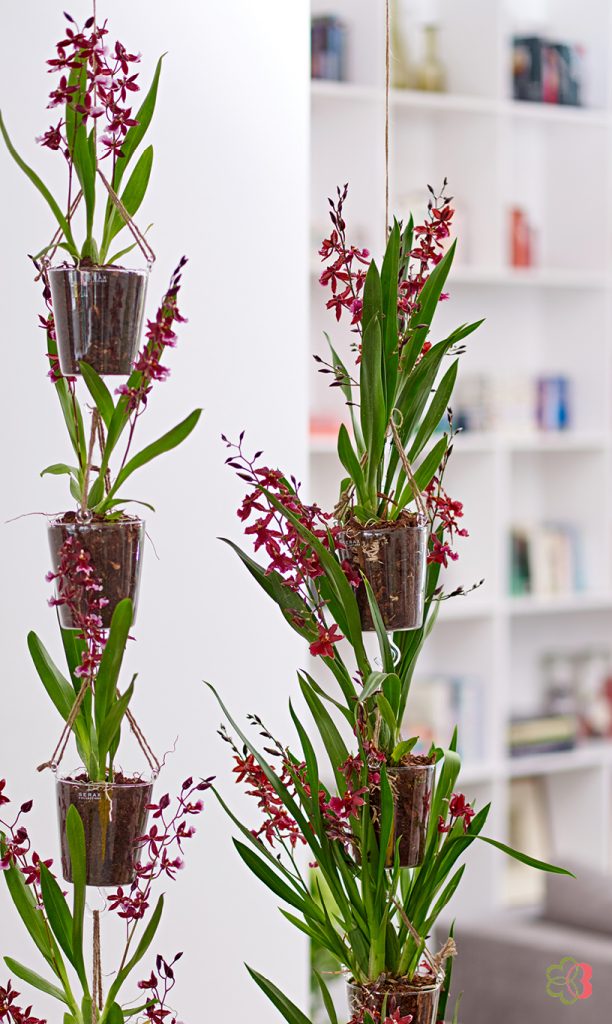
Cambria Orchids are very special because they do not occur in the wild, but are a hybrid of various plant species. The Belgian Charles Vuylsteke produced the first Cambria-like, the Cambria Vuylstekeara ‘Plush’, around 1900. A gorgeous hit created from Odontoglossum, Cochlioda, Miltonia, Oncidium and Brassia. The Cambria has a lot of cute little purple flowers which bloom up every room and give it an instant trend update because purple is the new black!
Oncidium: exuberant flowering
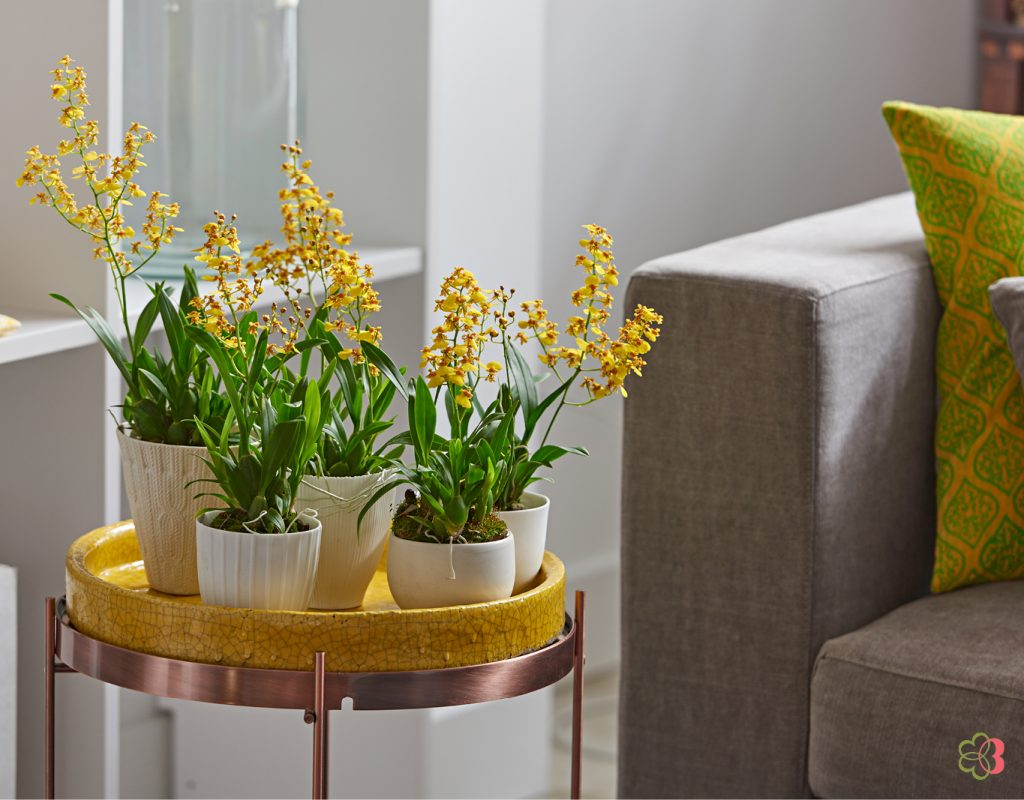
The Oncidium grows in the jungles of Central and South America on trees and in rock crevices and is also called the Tiger Orchid. It’s the ideal plant for lovers of exuberant flowering because of the large number of flowers on each branch. If you are gentle for the Oncidium, it will produce new pseudobulbs which may produce a new branch of flowers when they are fully grown. A pseudobulb which has flowered will unfortunately not flower again and can be removed. The aerial roots of the Oncidium should not be removed.
I was pleased to meet these new varieties and can wait to meet more of them, so I might make another Orchid exploring trip
Which one would you want to place in your home? Share it on Facebook.


